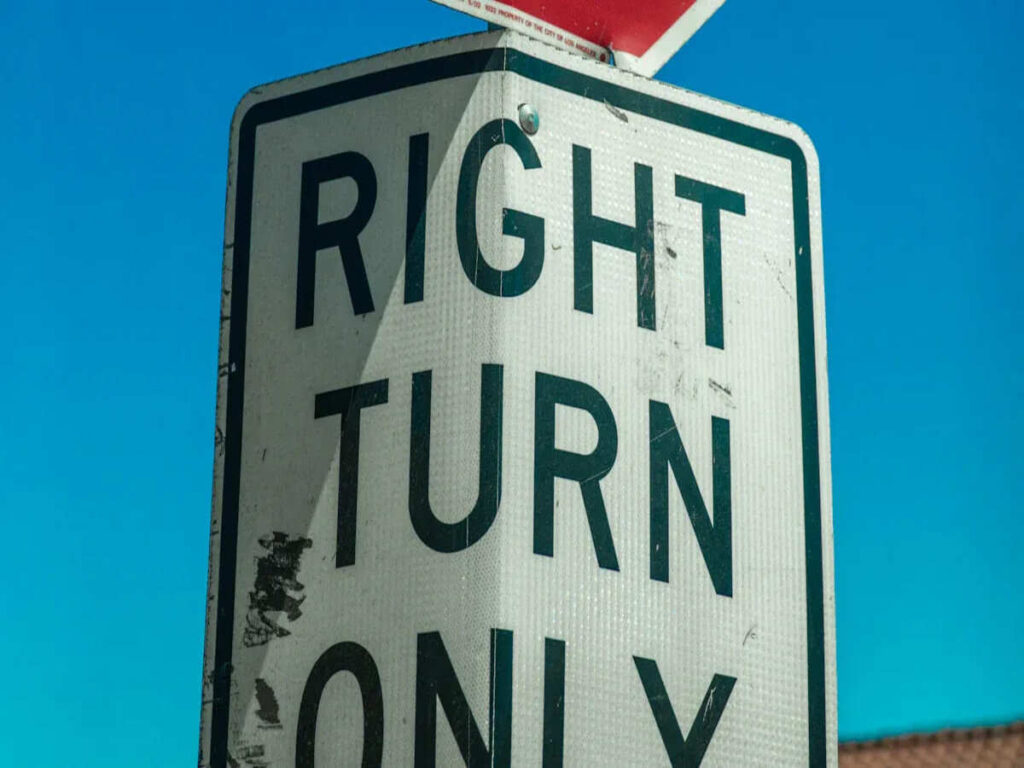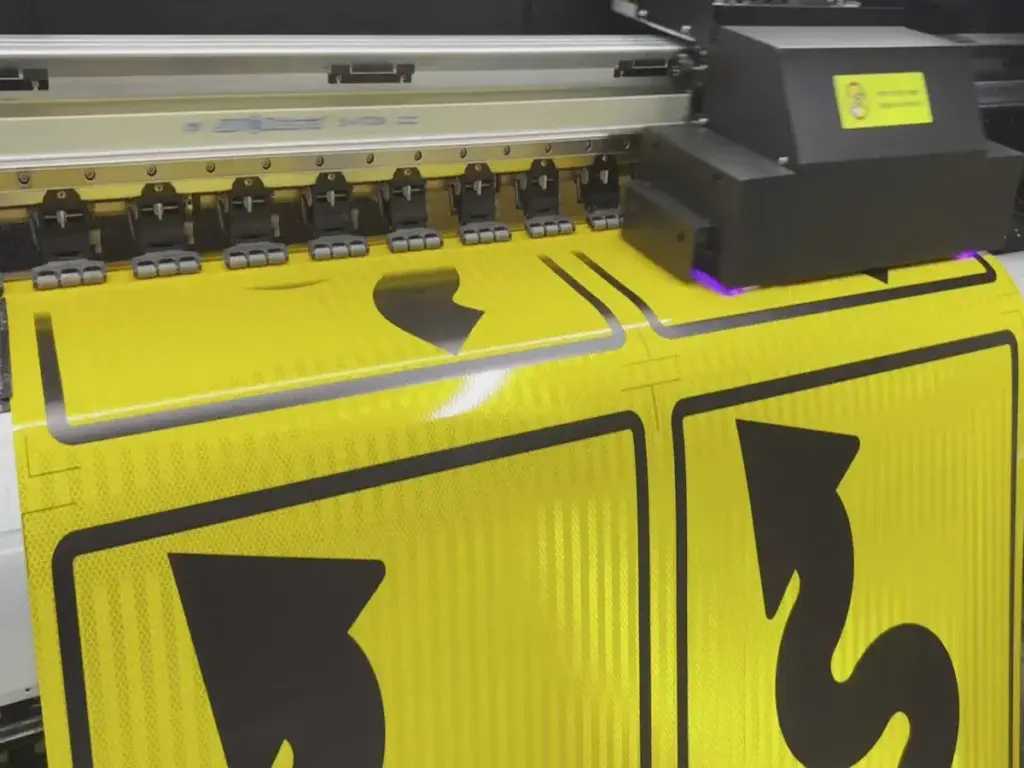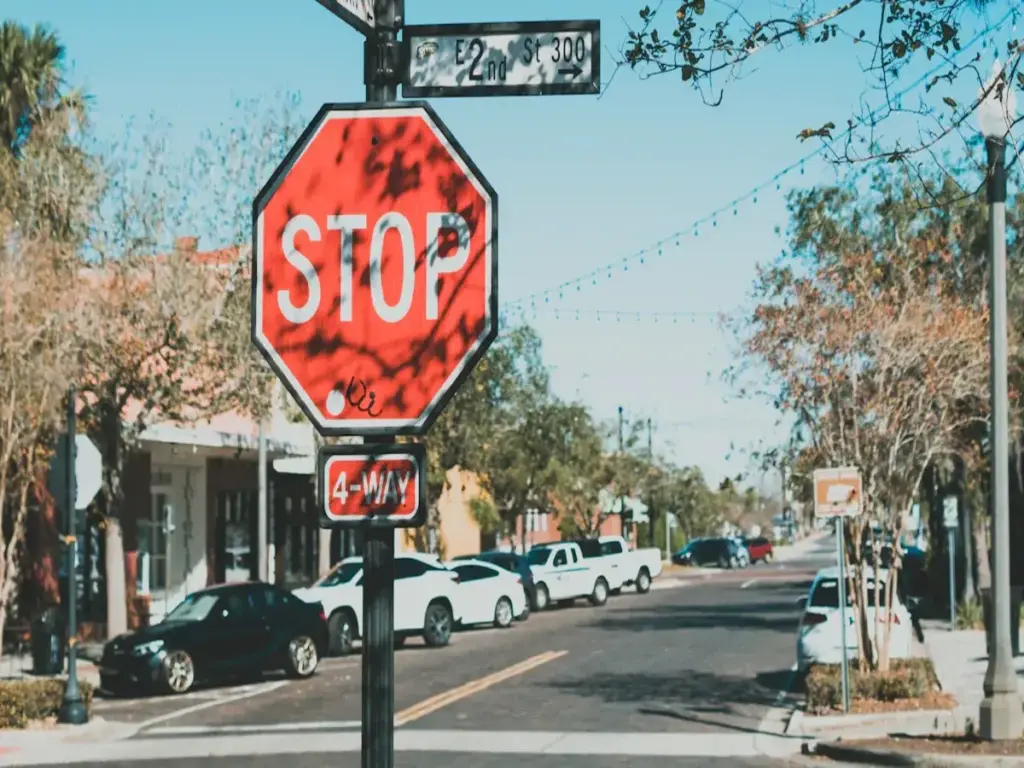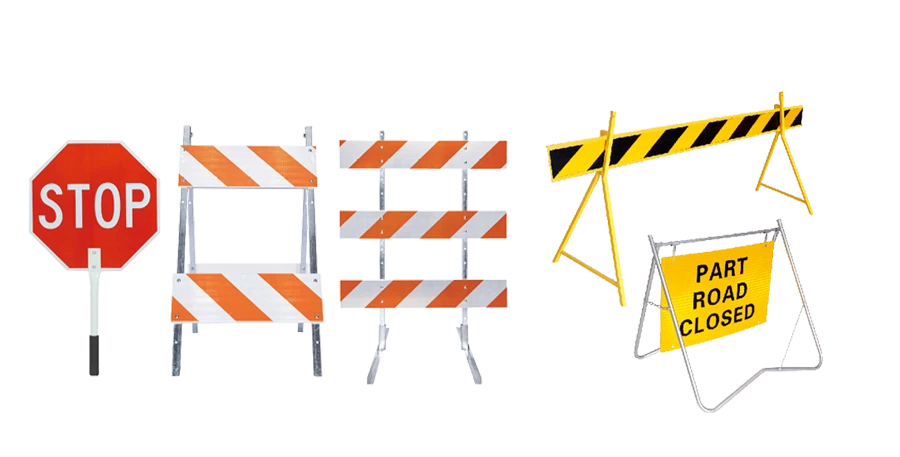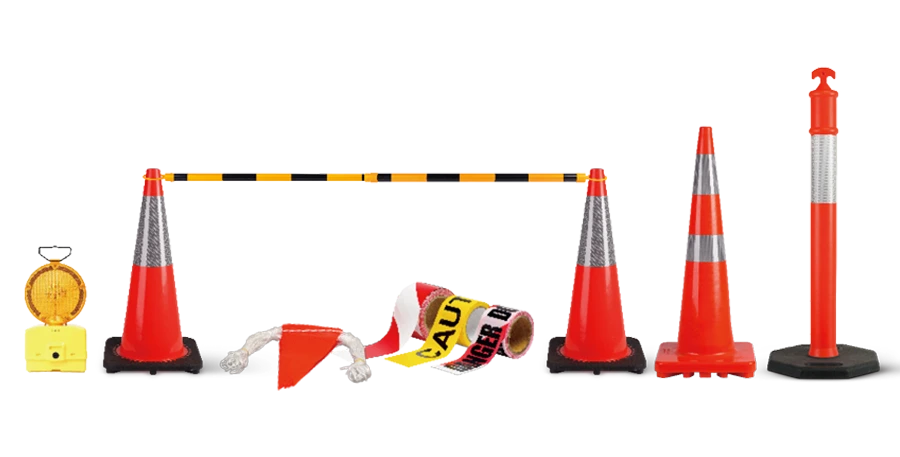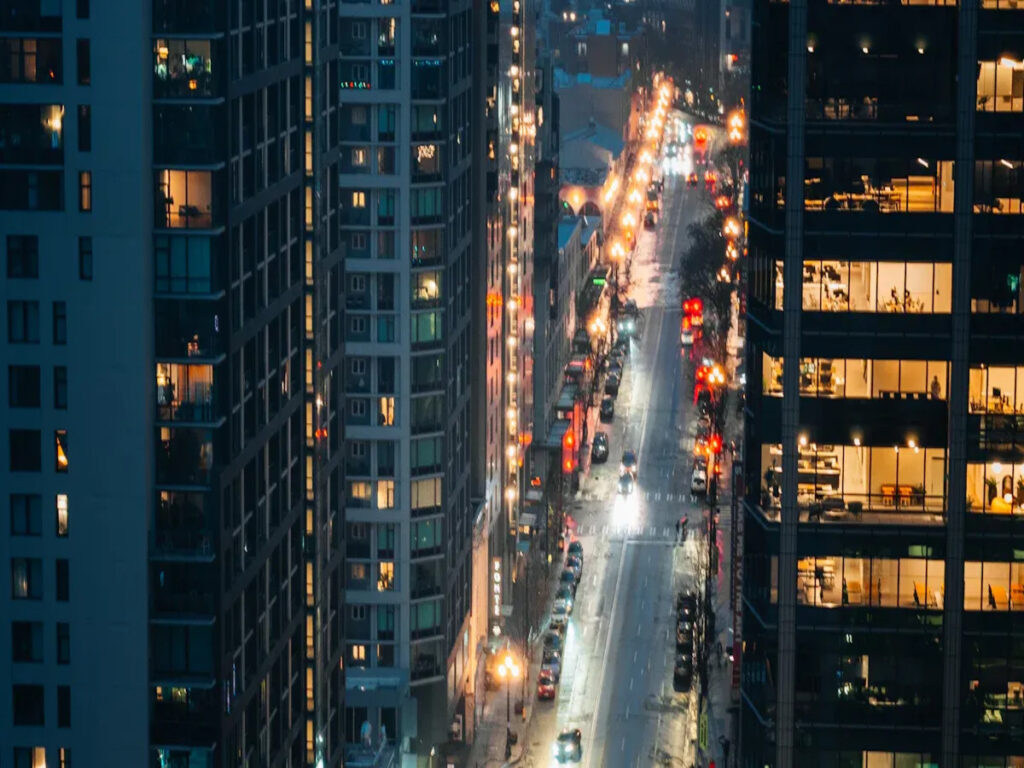
Les rues plus intelligentes modifient la façon dont les villes gèrent le trafic. Vous pouvez voir un trafic plus fluide lorsque des outils utiles sont utilisés. Canaliser les appareils, comme les cônes et les barrières, Aidez les voitures et les personnes. Ces outils n'organisent pas seulement le trafic - ils fabriquent des zones sûres et permettent des configurations de rue flexibles. Mais voici la grande question: Comment ces outils fonctionnent-ils avec les systèmes d'IA pour les rues plus sûres? Voyons comment ils connectent les idées numériques avec les rues du monde réel.
À OPTRAFIC, nous concevons et fournissons des dispositifs de canalisation du trafic qui répondent aux exigences des technologies modernes, systèmes de voirie adaptables. Cônes de sécurité routière haute visibilité OPTRAFFIC, barrières de circulation, et des outils de sécurité modulaires aident les villes à connecter des stratégies de circulation intelligentes avec des performances de sécurité réelles. Que vous gériez des zones de bordure, réacheminement d'événement, ou contrôle des voies piloté par l'IA, nos solutions contribuent à une sécurité accrue, des rues plus flexibles.
Principaux à retenir
- Des dispositifs tels que des cônes et des barrières aident à guider les voitures et à protéger les piétons, Rendre les routes plus sûres.
- L'IA améliore la fluidité du trafic en devinant les modèles et en changeant rapidement les feux, garder les rues sûres et fluides.
- L'utilisation d'appareils dotés de l'IA aide les villes à gérer les changements de trafic, réduire les retards et les accidents.
- Les données de ces appareils aident l'IA à trouver les points chauds, pour que les villes puissent résoudre les problèmes et assurer la sécurité des personnes.
- Les villes peuvent construire des « rues complètes »’ en mélangeant technologie intelligente et outils, rendre les routes sûres, facile à utiliser, et écologique pour tous.
Canaliser les appareils dans les transports modernes
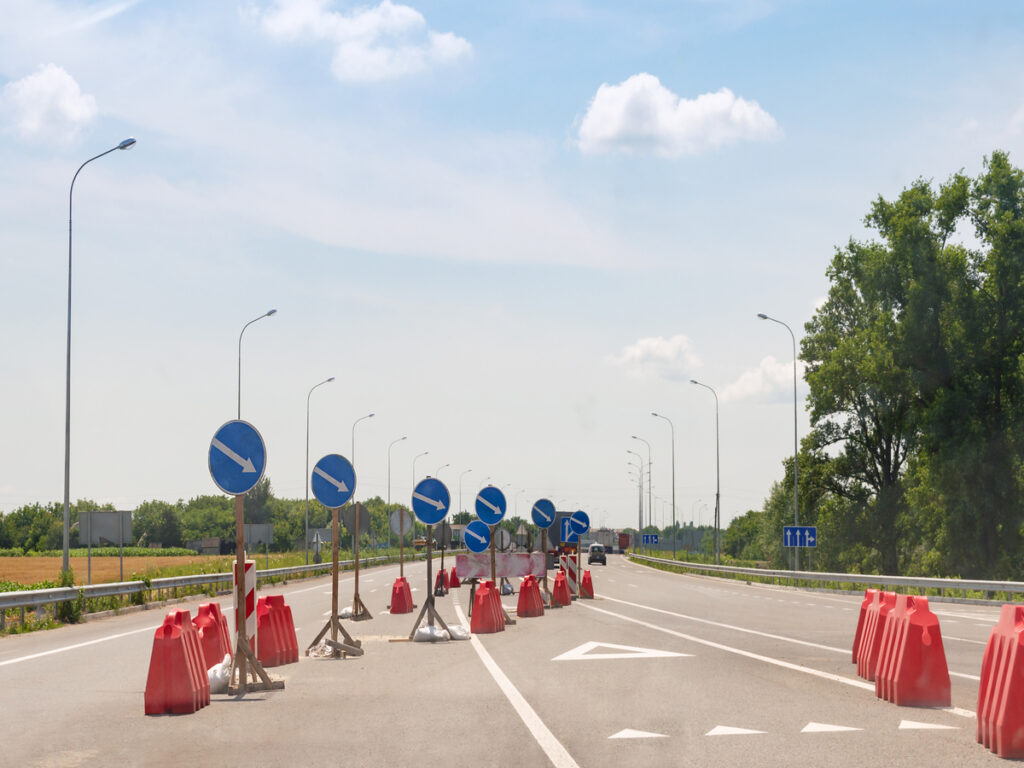
Utilisations traditionnelles dans la gestion du trafic
Vous avez probablement vu des cônes de signalisation, barrières routières, ou des panneaux de signalisation sur les routes. Ces outils sont utilisés depuis des années pour organiser le trafic. Ils contribuent à assurer la sécurité des conducteurs et à les guider. Les travailleurs les utilisent pour marquer les zones de construction ou rediriger les voitures. Ils aident également les piétons à traverser les rues très fréquentées en toute sécurité. Leurs couleurs vives et leurs surfaces brillantes les rendent faciles à voir, Même la nuit.
Aujourd'hui, ces outils sont encore plus intelligents. Véhicules connectés (CV) travaille maintenant avec ces appareils. Cela aide les conducteurs à rester plus conscients de leur environnement. Des fonctionnalités telles que le maintien de la voie et les avertissements de collision dépendent de ces outils. Les appareils intelligents comme les lampes et les fusées éclairantes IoT les rendent encore meilleurs. Ils s'adaptent aux changements de circulation et améliorent la sécurité.
Importance de la définition des zones de sécurité et des limites des voies
Les dispositifs de canalisation sont essentiels pour rendre les routes plus sûres. Ils ne se contentent pas de guider les voitures, ils protègent aussi les personnes. Des terre-pleins surélevés et des voies de virage contribuent à réduire les accidents. Par exemple, l'ajout d'une voie de virage à gauche peut réduire les accidents en 24%. Si les deux côtés ont des voies de virage, les accidents passent par là 42%.
Les piétons sont également plus en sécurité avec ces outils. Des médianes surélevées réduisent les accidents de piétons de 11.5%. Dans les zones rurales, ils réduisent les accidents aux intersections en 5%. Ces chiffres montrent comment ces outils sauvent des vies et préviennent les blessures.
En balisant des voies claires et des zones de sécurité, la circulation se déroule mieux et les risques diminuent. Que ce soit pour un événement court ou une utilisation permanente, ces outils sont essentiels pour des routes plus sûres aujourd'hui.
Rues complètes compatibles avec l'IA: Une nouvelle ère dans le design urbain
Principales caractéristiques des systèmes de trafic pilotés par l'IA
L'IA change la façon dont les villes gèrent le trafic au quotidien. Certaines rues semblent plus fluides grâce à la technologie intelligente. Les systèmes d'IA prédisent et s'adaptent rapidement aux changements de trafic. Voici comment ils procèdent:
- Analyse prédictive: L'IA devine le trafic futur pour planifier les périodes de pointe.
- Modèles d'apprentissage automatique: Ces outils étudient les données pour faire de meilleures prévisions de trafic.
- Intégration de données en temps réel: Les capteurs et les caméras partagent des mises à jour en direct pour des décisions plus intelligentes.
- Optimisation des feux de circulation: Les signaux changent en fonction de la vitesse, météo, et les besoins de circulation.
- Signaux de circulation adaptatifs: Les horaires changent pendant les heures de pointe pour réduire les embouteillages.
- Applications de navigation basées sur l'IA: Les applications redirigent les voitures à l'aide de systèmes connectés pour de meilleures directions.
Ces outils n'améliorent pas seulement la circulation : ils rendent les rues plus sûres et plus faciles à utiliser.. En mélangeant l'IA avec des outils comme dispositifs de canalisation, les villes créent des rues qui conviennent à tout le monde.
Amélioration de la sécurité, Accessibilité, et durabilité
L'IA aide les gens, pas seulement les voitures. Des rues complètes visent à assurer la sécurité de tous, que ce soit en marchant, vélo, ou en utilisant les bus. Voici comment l’IA soutient cet objectif:
| Métrique | Impact |
|---|---|
| Réduction du risque piéton | 30– 40 % d’accidents en moins grâce à une meilleure fluidité du trafic |
| Ajustements des feux de circulation | Les horaires changent à l'aide de données en direct |
| Des temps de trajet plus courts | Jusqu'à 20% voyage plus rapide |
L'IA rend les marcheurs et les motards plus visibles pour les conducteurs. Il détecte les zones problématiques et les résout rapidement. Par exemple, l'espace libre peut être géré numériquement pour éviter les conflits.
Quand les villes mélangent technologies intelligentes et outils physiques, les rues deviennent plus sûres et plus vertes. Des rues complètes encouragent la marche et le vélo, réduire la pollution et améliorer la santé. En mettant l’accent sur la sécurité et la durabilité, L’IA aide les villes à bâtir un avenir meilleur pour tous.
Intégration des dispositifs de canalisation avec les technologies d'IA
Rôle dans la gestion adaptative du trafic
Imaginez-vous en train de conduire sur une route très fréquentée où la circulation se déplace facilement. C'est la gestion adaptative du trafic au travail. Canaliser les appareils, comme les cônes et les barrières, aider à rendre cela possible. Ils guident les voitures et donnent aux systèmes d'IA la structure nécessaire pour gérer le trafic. Ces outils marquent les voies et les zones de sécurité, aider l'IA à ajuster les signaux et à réorienter les voitures.
L'IA utilise des données en direct pour prendre des décisions rapides. Les appareils de canalisation aident en gardant le trafic prévisible. Des marquages au sol clairs permettent à l'IA de modifier les feux de circulation et de réduire les temps d'attente. Cela accélère la circulation des voitures et assure le bon fonctionnement des intersections..
Voici comment ces outils contribuent à la gestion adaptative du trafic:
| Métrique | Description |
|---|---|
| Vitesse moyenne du véhicule | Montre à quel point le trafic circule bien aux intersections. |
| Durée du cycle | Suit la façon dont les feux de circulation s'ajustent en fonction des conditions en direct. |
| Phases dynamiques des feux de circulation | Réduit les temps d'attente en changeant les feux pour correspondre à la circulation. |
Ensemble, L'IA et les dispositifs de canalisation créent des rues qui s'adaptent aux changements. Cela rend la conduite plus rapide et moins stressante.
Contributions à la sécurité des piétons et à des infrastructures équitables
Assurer la sécurité des piétons est très important dans la conception des rues. Les dispositifs de canalisation aident à séparer les voitures et les personnes. Des terre-pleins surélevés protègent les marcheurs, tandis que des cônes les guident sur des routes très fréquentées.
L'IA rend cela encore meilleur en observant comment les gens bougent. Il repère les zones à risque et ajuste les feux de circulation pour assurer la sécurité des promeneurs. Par exemple, L’IA peut donner aux piétons plus de temps pour traverser pendant les heures de pointe. Il peut également éloigner les voitures des trottoirs bondés..
Ces outils rendent également les rues équitables pour tous. Les dispositifs de canalisation créent des espaces pour les marcheurs et les cyclistes. L'IA garantit que ces zones sont faciles à utiliser, même pour les personnes handicapées. Ensemble, ils rendent les rues plus sûres et plus accueillantes pour tous.
Collecte de données en temps réel et analyse prédictive
Les appareils de canalisation font plus que guider le trafic : ils collectent également des données. Beaucoup ont des capteurs qui suivent le trafic, promeneurs, et la météo. Ces données vont aux systèmes d'IA, qui l'utilisent pour prédire les problèmes.
L'analyse prédictive fonctionne comme une boule de cristal de trafic. Cela aide l'IA à arrêter les problèmes avant qu'ils ne surviennent. Par exemple, si les capteurs détectent plus de marcheurs à proximité d'une école, L'IA peut modifier les signaux pour les protéger. Si les voitures accélèrent, L'IA peut ajouter des barrières pour les ralentir.
Ce feedback constant maintient les rues prêtes à tout. En mixant outils et smart data, les villes rendent les routes plus sûres et plus faciles pour tous.
Applications et études de cas dans le monde réel
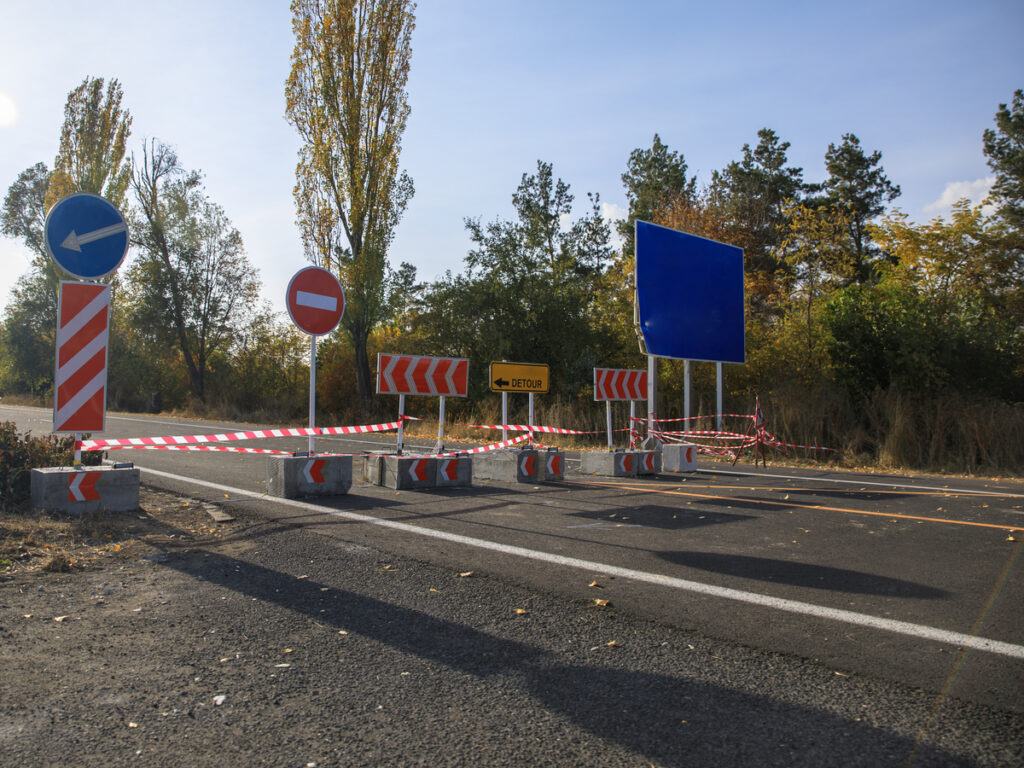
Exemples de Miami, Minneapolis, et San Francisco
Villes aux États-Unis. utilisent l'IA avec des outils de trafic. Miami utilise des signaux intelligents avec des cônes et des barrières. Ces signaux changent rapidement pour réduire les embouteillages. Les passages pour piétons et les intersections sont plus sécuritaires, Surtout dans les zones animées.
Minneapolis s'efforce de faciliter la marche. La ville utilise des barrières de circulation mobiles pour les zones de marche temporaires lors d'événements. L'IA surveille la circulation et change de voie pour aider les marcheurs et les cyclistes. Cette configuration assure la sécurité de tout le monde et permet de se déplacer en douceur.
San Francisco utilise l'IA et les barrières pour gérer l'espace libre. Des barrières temporaires guident les wagons vers les zones de chargement. L'IA suit la façon dont ces zones sont utilisées. Cela réduit les problèmes entre les conducteurs et les marcheurs, rendre les rues plus sûres et plus organisées.
Exemples de réussite dans la réduction des collisions et l’amélioration de la conformité
Quand les villes mélangent IA et outils de gestion du trafic, les résultats sont clairs. Voici ce qui se passe:
- Les excès de vitesse provoquent de nombreux accidents. L'IA et les barrières aident à ralentir les voitures.
- De nombreux accidents se produisent lorsque les conducteurs brûlent les feux rouges. Les signaux intelligents et la surveillance arrêtent cela, réduction des accidents.
- La Californie montre que les cônes et les barrières dotés de l'IA améliorent la sécurité. Moins de plantages se produisent lorsque ces outils sont utilisés ensemble.
En résolvant ces problèmes, les villes ont moins d'accidents et des routes plus sûres. Les technologies et les outils intelligents améliorent les transports pour tous.
Gestion de l'espace public avec l'IA et les dispositifs de canalisation
La gestion des espaces publics nécessite à la fois de la technologie et des outils. Les villes trouvent de nouvelles façons d’y parvenir.
| Ville | Technologie utilisée | Comment ça aide |
|---|---|---|
| Singapour | IoT, IA, Mégadonnées | Suit le trafic en direct pour rendre les déplacements plus faciles et plus rapides. |
| Barcelone | Éclairage intelligent avec IoT | Économise de l'énergie et rend les rues plus sûres pour les marcheurs. |
| IoT pour la gestion des déchets | Empêche les poubelles de déborder et permet d'économiser de l'argent. | |
| Dubaï | L'IA pour la sécurité publique | Utilise la reconnaissance faciale pour assurer la sécurité des personnes. |
Ces exemples montrent comment l'IA et les outils améliorent les espaces publics. Singapour utilise le suivi du trafic en direct pour des déplacements plus fluides. Barcelone économise de l'énergie grâce à des lumières intelligentes et assure la sécurité des rues. Dubaï utilise l'IA pour protéger les gens et leur permettre de se sentir en sécurité.
En combinant IA et outils, les villes facilitent les déplacements et améliorent les espaces. Cela aide tout le monde à profiter d’une vie plus sûre et plus confortable.
Relever les défis et combler les lacunes en matière d’intégration
Erreurs courantes dans la planification de l’infrastructure physique
La planification des routes et des outils peut parfois manquer des détails importants. Les systèmes numériques reçoivent souvent plus d’attention que les systèmes physiques. Cela peut poser des problèmes. Par exemple:
- Les inquiétudes en matière de sécurité s’accentuent avec les investissements étrangers dans l’IA et les routes.
- L'utilisation des terres agricoles et de l'eau est souvent ignorée dans les projets urbains.
Ces erreurs ralentissent les mises à niveau de sécurité et rendent les systèmes moins fluides. Sans une bonne planification, tools like smart crosswalks may not match traffic needs. This can affect how safe roads are for everyone.
Easy Fixes for Better Integration
Fixing these problems doesn’t have to be hard. Simple ideas like QR codes and tracking tools help a lot. QR codes are easy to scan and need no special gear. A quick scan shows where a tool is or if it needs fixing.
Tracking tools also help keep things organized. They show who last fixed a tool or where it’s stored. This stops theft and careless use. Tracking apps can remind teams to fix tools or save them for later use. These steps keep tools ready for safer streets.
Making Placement Rules Clear
Another problem is placing tools in confusing ways. Teams often use different rules, which can confuse drivers and walkers. Des règles de placement claires résolvent ce problème. Les villes peuvent utiliser les données pour décider où placer les cônes ou les barrières. Cela aide la circulation à mieux circuler et assure le bon fonctionnement des passages pour piétons..
Quand tout le monde suit les mêmes règles, les rues restent plus sûres. Les équipes peuvent également apporter des modifications rapides en cas de besoin. Cela rend les routes plus faciles à utiliser pour tous.
L'avenir des rues a besoin à la fois de technologie et d'outils. L’IA aide à faire des choix intelligents en matière de trafic, mais des outils comme dispositifs de canalisation sont encore nécessaires. Ces appareils prennent en charge les systèmes d'IA et rendent les routes plus sûres et plus flexibles.
Conseil: Imaginez-le en équipe : l'IA pense, et les appareils font le travail.
Pour construire “Rues complètes,” les villes doivent combiner technologies intelligentes et outils adaptables. Quand ils travaillent ensemble, les rues deviennent plus sûres, nettoyeur, Et mieux pour tout le monde.
FAQ
Que sont les dispositifs de canalisation, Et pourquoi sont-ils importants?
Les dispositifs de canalisation sont des cônes de signalisation, barrières, et des marqueurs. Ils guident la circulation et créent des espaces sûrs pour les personnes. Ces outils rendent les rues plus sûres et plus organisées. Lorsqu'il est utilisé avec l'IA, ils fonctionnent encore mieux.
Comment les appareils de canalisation fonctionnent-ils avec les systèmes d'IA?
L'IA utilise des caméras et des capteurs pour gérer le flux de trafic. Les appareils de canalisation donnent à l’IA la structure dont elle a besoin. Ils aident à contrôler les voies, signaux, et les zones piétonnes.
Les appareils de canalisation peuvent-ils collecter des données?
Oui, ils peuvent! De nombreux appareils disposent de capteurs pour suivre le trafic et la météo. Ces données aident l'IA à prédire les problèmes et à rendre les rues plus sûres pour tous.
Les dispositifs de canalisation sont-ils réutilisables?
Oui, ils sont! Les villes utilisent souvent des appareils qui peuvent être déplacés et réutilisés. Ils fonctionnent bien pour les événements, construction, ou des changements de route temporaires. Cela rend les rues plus flexibles.
Comment ces outils améliorent-ils la sécurité des piétons?
Les dispositifs de canalisation éloignent les voitures des marcheurs et des motards. L'IA améliore cela en modifiant les signaux et en redirigeant le trafic. Cela assure la sécurité des piétons dans les zones très fréquentées.


